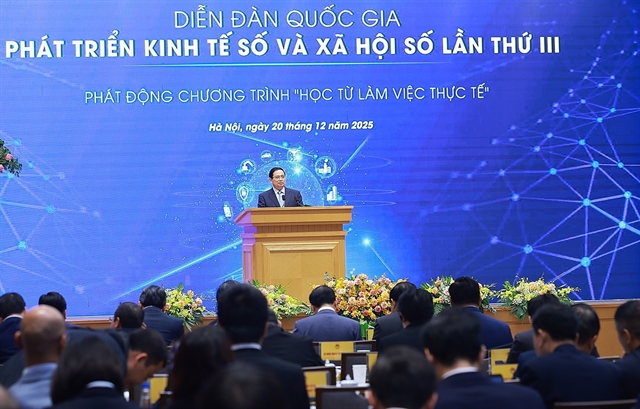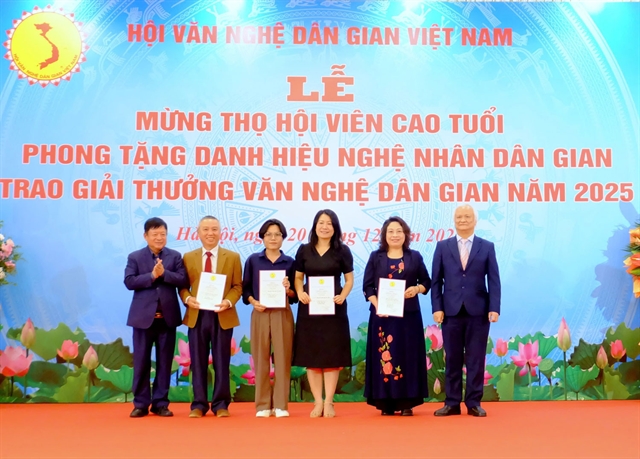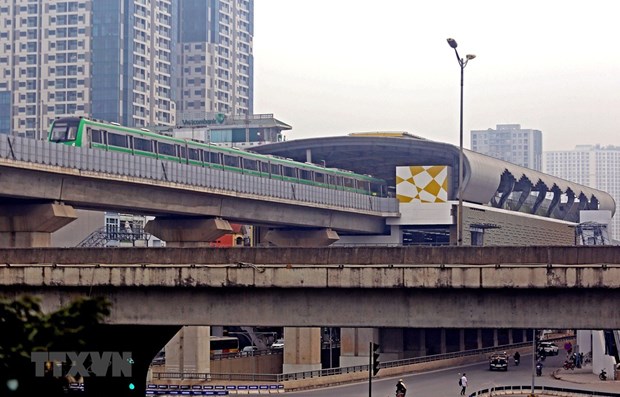 Society
Society


|
| The 13.5km-long railway line, from Cát Linh Street in Ba Đình district to the suburban district of Hà Đông, cost approximately US$868 million, of which two-thirds were loans from China. — VNA/VNS Photo Huy Hùng |
HÀ NỘI — Việt Nam would pay the Chinese contractor 95 per cent of the value of the contract for the Cát Linh-Hà Đông urban railway project when the project is completed and passes checks, Deputy Minister of Transport Nguyễn Ngọc Đông said at the Government’s regular press conference on Tuesday.
He made the remarks while replying to a question about the Ministry of Transport (MoT)’s responsibility in the long-delayed project, especially when the Chinese contractor recently demanded US$50 million to be paid before the entire line’s trial run.
During an online meeting between the Vietnamese project investor on May 12, the Chinese contractor – China Railway No 6 Bureau Group – asked for the payment of $50 million because it was facing financial difficulty.
Đông said that the contractor’ request for payment was made verbally only, and has not materialised in any official written documents.
Đông said the payment must be made in line with the signed contract, noting that 95 per cent of the contract’s value will be paid by the Vietnamese side when the project is completed and passes checks. The remaining five per cent will be kept for maintenance, similar to other investment projects.
The MoT’s Railway Management Board, which is the project’s investor, is responsible for making the payment, the Vietnamese transport official said, adding that it has paid up about 80 per cent of the contract’s value according to the finished workload and the contract.
Meanwhile, the ministry is responsible for directing the Railway Management Board in working with the contractor and mobilising resources for the project implementation, Đông said.
“Efforts are being made to complete the project, assess its safety and put the line into operation,” Đông said.
Despite 99 per cent of the workload being completed, the project’s commercial operations have experienced multiple setbacks and been delayed eight times since construction began in 2011.
The project was due to start a 20-day trial run on February 1 for inspection purposes. However, over 100 Chinese experts could not return to Việt Nam following China's lockdown order due to the COVID-19 pandemic, which resulted in a delay to the trial.
Only four experts had been admitted to Việt Nam on official visas.
The MoT has invited a French consulting firm Apave-Certifier-Tricc consortium (ACT) to evaluate the safety of the railway system. Until mid-March 2020, the firm has so far completed 12 out of 13 assessments of the project.
According to the Railway Management Board, as soon as Prime Minister Nguyễn Xuân Phúc approved entries of foreign experts to Việt Nam during the COVID-19 pandemic, the management board planned to bring 150 Chinese experts back to work.
They are expected to return Việt Nam early this month and spent 14 days under quarantine. Meanwhile, the time for ACT’s experts to return to Việt Nam has not yet been identified due to visa issues and their own countries’ COVID-19 prevention and control policies.
The 13.5km-long railway line, from Cát Linh Street in Ba Đình District to the suburban district of Hà Đông, cost approximately US$868 million, of which two-thirds were loans from China.
Construction officially began in 2011 and was initially planned to be completed in 2014, until several delays dragged the project to a yet unknown date of completion.
The elevated railway has been running trials since September 2018. — VNS




